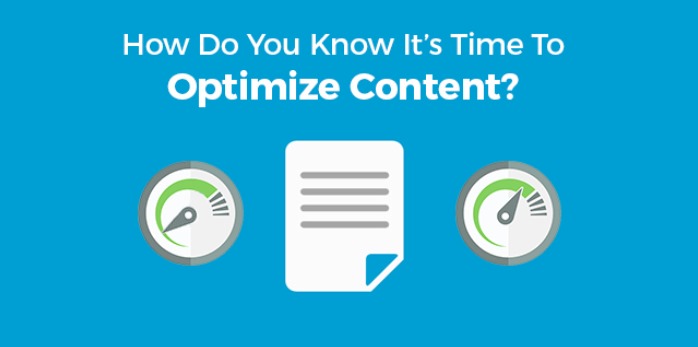How do SEO and Content Rate Optimization work together?
From the standpoint of SEO, an organic search approach is to increase organic traffic to a company’s website while generating high-quality leads. To achieve such results, you must have an efficient approach and consider incorporating CRO.
Although a digital marketing course would be the right choice to sharpen and expand your knowledge on such digital marketing aspects, there’s no harm in having some insights about it. So, what role and function does a CRO serve in an SEO campaign? Let’s find out.
What is Content Rate Optimization?

If the SEO operates to drive the website’s traffic, then Content Rate Optimization or CRO must strive to convert that traffic. Even though CRO and SEO are separate strategies, they essentially work towards a single objective: bringing in more clients and boosting ROI.
Conversion rate optimization, or CRO, is a deliberate method to increase the proportion of visitors carrying out the intended activity, such as joining a mailing list, providing personal information on a form, or purchasing.
Enrolling in a professional digital marketing course is the best solution to integrate CRO and SEO and become a specialist seamlessly. Today, many CRO professionals are pursuing this course to upgrade their skills and perform better in their companies.
Understanding how CRO and SEO Work Together
The relationship between CRO and SEO is like a match in haven. If you re-evaluate what you’ve read up to this point, it must be abundantly evident that if your SEO objective is simply to rank, you must perform SEO correctly.
Similarly, you must consider your page’s position or target audience to perform CRO correctly if you’re testing strategies to increase conversions. Traffic is only worthwhile if it generates revenue, and a high conversion rate is worthless if only a few people visit the website.
You’re squandering your efforts, time, and money if you need to think more clearly about search intent (for SEO) and usage patterns (for CRO).
This is where pursuing a professional digital marketing course helps professionals who need to learn more about CRO and SEO. Picking that for later as a certification course would be your breakthrough for something better and upscaling.
Looking at their objectives
The primary objective of any SEO strategy is to increase website traffic. CRO seeks to increase action by motivating more individuals to convert that traffic.
Have you ever used Google to find a particular topic and then come across a post on a blog? When you reached the post’s conclusion, a box asking you to sign up for a newsletter popped up. It generally asks you to subscribe to receive more articles like this in your mail inbox.
Have you ever used Google to find a landing page, checked it out, and purchased the recommended product because it suited your needs? These two straightforward examples illustrate what it means to drive website traffic and later convert that traffic. Plus, they also demonstrate how SEO and CRO complement one another.
If SEO is responsible for attracting visitors, CRO keeps them there and gets them to take the required action. Even though SEO activates and satisfies a demand while still developing, CRO ensures that the requirements are met, luring consumers to act.
To further comprehend how these two strategies combine to produce results, take a look at this video: https://www.youtube.com/embed/56ZRyX9ltyY
What to conclude from this section
Often, SEO is employed as a tool to raise awareness. More visitors to your website and, ideally, the beginning of their relationship with your company will result from your content ranking highly for particular keywords. The marketing funnel is fueled by SEO with a lot of potential customers.
Meanwhile, CRO aids in converting these potential consumers into real ones by giving them the resources to assess and choose what to do after arriving at a website. The funnel’s center is where SEO and CRO work together; SEO works at the top, and CRO works at the bottom.
Let’s say a user accesses a Google page but needs help locating the content they were looking for. In that scenario, SEO and CRO didn’t perform well because CRO didn’t pique consumers’ interest in taking action to see results, while SEO made promises that needed to be kept.
Top three practices to integrate CRO and SEO
Here are a few suggestions to ensure that CRO and SEO tactics work well together.
1. Provide concise & engaging meta descriptions & title tags
Provide concise and engaging meta descriptions and title tags that precisely define what readers can find on your pages if you want to rank effectively and convert site traffic. Your website will receive more relevant traffic, have a higher engagement rate, and experience a decrease in bounce rates if your meta tags effectively summarize the content.
2. Incorporate content in every stage of an user’s sales journey
To guide clients through learning about your product and making a purchase, your sales should include several steps. It’s crucial to adapt your material to the phase your consumers are in so that you can successfully guide them throughout your sales process.
Educating potential clients about your offerings is the first step. Creating backlinks on highly authoritative websites can be an excellent strategy to achieve this. Getting a buyer interested in your goods must be your following objective.
Remember that, at this point, a potential consumer knows very little about what you do. This is your chance to let them know which of their demands you can meet. All these steps and objectives involve more depth and complexities that you can better learn by pursuing a professional digital marketing course.
Also, certain clients require one more push. To deliver a product demonstration, you may email the recipient. A professional digital marketing course will even aid you in learning this step of CRO and SEO integration.
3. A/B testing
Lastly, working professionals and CRO specialists strongly recommend pursuing a professional digital marketing course, as you also get to learn every aspect of A/B testing. This testing procedure is crucial to the CRO and SEO integration procedure.
Ending Note
SEO and CRO should go hand-in-hand if you expect to reach and convert leads. Optimizing a website to rank in Google results and convert visitors requires time and expert insights.
If you want to excel in this field of digital marketing, a professional digital marketing course would be the best choice. Enrolling in such a course will help you increase conversions and drive more sales to the firm or client. Thus, you’ll soon witness promotions, salary hikes, and other perks incoming. So, it’s time to upskill and make the most of the best professional courses.





